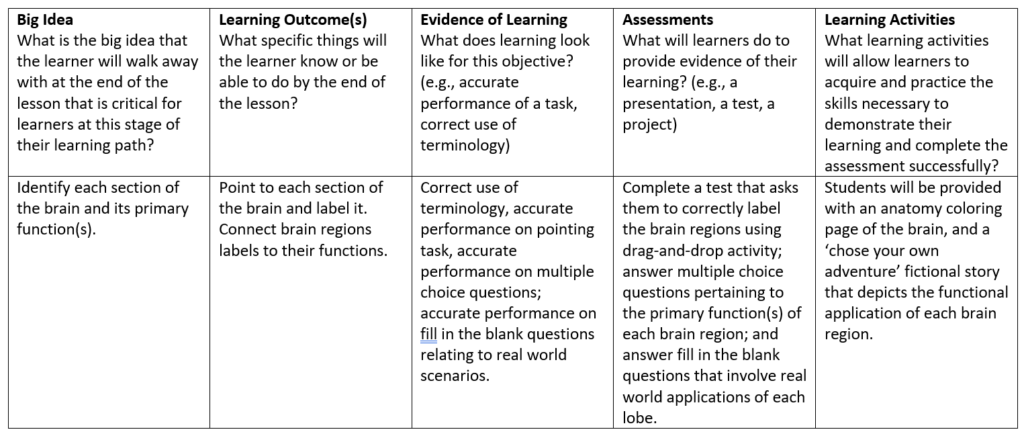In module 4, we explored the principles of learning design and active learning through creating a lesson plan and an interactive learning activity. In this blog post I will discuss my experience creating these materials, as well as the principles I mindfully incorporated throughout.
Creating a lesson plan
To guide the creation of my lesson plan (imaged below), I applied instructional design by incorporating constructive alignment and backwards design. First, I ensured that my assessments and activities aligned with my learning objective by recognizing a clear and consistent theme, namely labeling and operationalizing brain lobes. Second, I carried the theme by working backwards from the big takeaway to the learning activities.
Another consideration I kept at the forefront of my lesson planning was Merrill’s Principles of Instruction I did this by engaging students’ learning with real-world problems, specifically by offering scenarios that would demand the use of one or more brain lobes.

Creating an interactive learning activity with H5P
I toyed around with active learning by creating my own interactive learning activity using the WordPress plug-in, H5P. I had a lot of fun with this exercise because it allowed me to bring a learning activity to life. I can imagine that in an actual classroom, this would greatly support and facilitate students’ learning, especially the versions of the plug-in that incorporated words and images, because this works on two different cognitive faculties, referred to as Paivo’s Dual Coding Theory. Based on this assumption, the activity I created uses a picture of the brain and the names of the lobes (displayed below).
Did you enjoy the acitivty? Let me know by leaving a comment below!
Hey Syd, I enjoyed your H5P activity and thought it was a good example of how to make the learner confirm they know the lobes of the brain. It also gives feedback to the teacher if the learner has grasped the lesson or not. I liked that you took a simple picture of the brain and added the arrows to clarify for the learner.